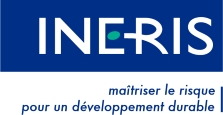Frequently asked questions
At present, epoxy resins may be used in:
- The protective inner coating of food tins;
- The inner protection of the lids of glass jars (jam, ready meals, small pots for babies, caps of glass bottles, etc.);
- The protective inner coating of drinks cans;
- The coating of some kitchen utensils (cutting tools, cooking utensils, etc.);
- The protection of metal tanks and vats used in the agrifood industry.
In these applications, the role of the epoxy resin is to prevent corrosion of the metal. In the case of food tins, by preventing corrosion in this way, it ensures that the food in the tin remains microbiologically safe. In the case of lids for glass jars, the resin also acts as a seal.
Tetra Pak and Combifit ensure that their respective packaging solutions, Tetra Recart® and Combisafe®, are compatible with all types of cooked vegetables. Several types of vegetables are already available in this kind of packaging: chopped tomatoes and tomato sauces, dried vegetables in liquid (chickpeas, peas, etc.), mushrooms, green beans, etc.
The only requirements concerning the use of Tetra Recart® are that the contents must be conditioned in a liquid environment, there must be no air present, and some vegetables must be below a certain size (green beans).
As a manufacturer
Tests were conducted a few years ago in France by a major retailer, but they were abandoned due to a lack of success. A tinned food manufacturer also launched the "carré cuisiné" range of carton-packaged products in 2004, but these products have yet to become widespread in France.
In October 2011, another big name in supermarket distribution replaced all its own-brand tinned tomato products (purées, coulis, chopped tomatoes, etc.) with cartons. This initiative was followed in September 2012 by the launch of an innovative range of chunky soups sold in the same kind of packaging. Other soups containing noodles or chunks are also available on the market, including some soups for infants.
Cartons are more commonly used in northern Italy (18% of appertised dried vegetables, 13% of other appertised vegetables and 6% of appertised pet food, according to 2012 figures), and in Sweden (21% of appertised dried vegetables, 22% of appertised tomatoes and 14% of appertised sauces, according to 2012 figures), as well as in the UK and Spain. The brands that use this kind of packaging are mainly supermarket own brands aimed at the core market (mid-range products).
BPA is used in the production of a thermosetting epoxy lacquer, offering thermal and chemical stability, which allows food tins to last for several years and ensure the microbiological safety of the food they contain. This lacquer may also serve to preserve the organoleptic properties of the food.
At present, there is no universally reliable and applicable solution for replacing epoxy resins in food tins and drinks cans.
There are two possible approaches:
- either to use another type of packaging compatible with appertisation, such as a carton (e.g. Combifit® or Tetra Recart®), or a soft bag (Doypack®);
or to remove the BPA from the epoxy resin protecting the inside of the food tin. The SNFBM (French union of metallic packaging producers) indicates that four types of resins are currently used as alternatives to BPA-based epoxy resins in food tins and lids for glass jars.
- Acrylic lacquers
- Organosol lacquers
- Polyester lacquers (aminoplast, phenolic, urethane)
- Vinyls
These solutions are used, in particular, for food containers aimed at children under 3, in which BPA has been banned in France since 1 January 2013. The foods in question are not very corrosive, being neither too acidic nor too salty.
For other tinned products, it would appear that these 4 solutions could be suitable in most cases, but tests have to be carried out for each product, as we can never be certain how the lacquer will behave. Furthermore, we do not have a safe solution at present for certain more corrosive food products.
Other solutions are under development, but none has received final approval as yet. These solutions include new resins that could replace BPA-based epoxy resins, as well as epoxy resins that use a monomer other than BPA. A few examples are given below to illustrate the situations for which replacements are required:
- In the USA, Eden Foods has marketed tinned foods with oleoresin-based coatings. These resins do not withstand the acidity of some foodstuffs, such as tomatoes.
- The French National Institute for Agricultural Research (INRA) and the chemical engineering school ENSCM Montpellier are conducting promising research on polyphenol-based resins deriving from bio-sourced tannins, and industrial tests are planned for the months ahead.
Information about the progress and completion of this research work will be provided regularly on the SNA-BPA site.
One technique that has already been tried and tested involves gluing a PVC film to the epoxy resin so as to isolate it from the food product.
While this option significantly reduces migration of BPA into the food, it does not eliminate BPA from the food container entirely.
This problem ties in with the challenge of replacing epoxy resin in food tins (see the question "How can BPA be replaced in food tins and drinks cans? ").
Contributions on this subject are welcome (see the "contact" section of the site).

